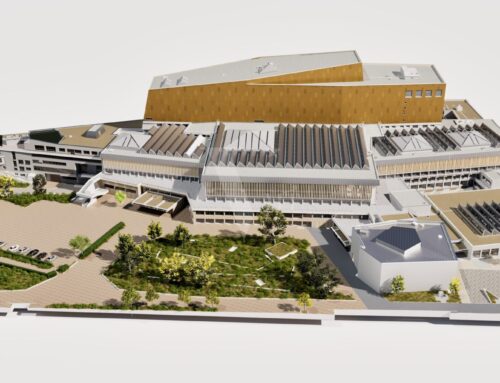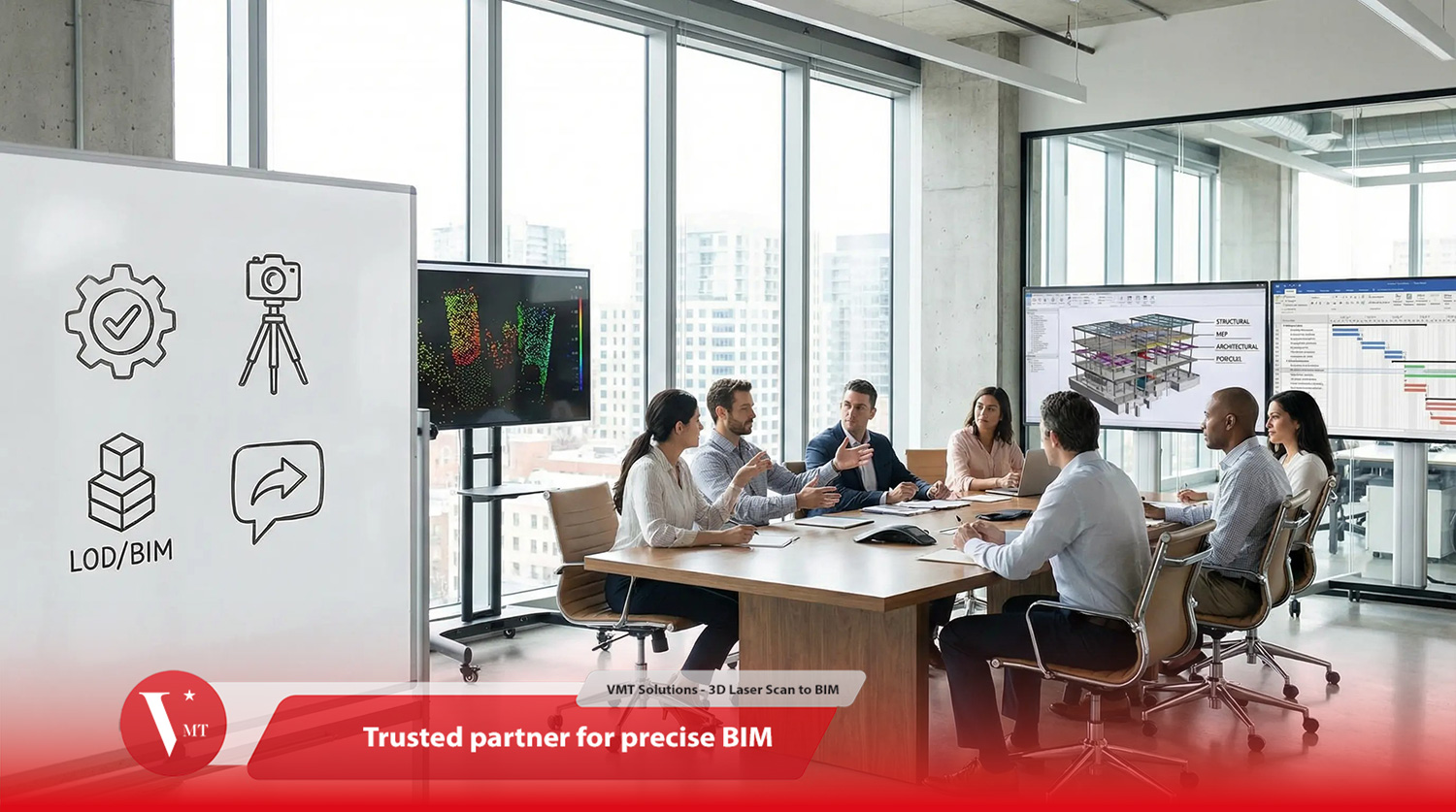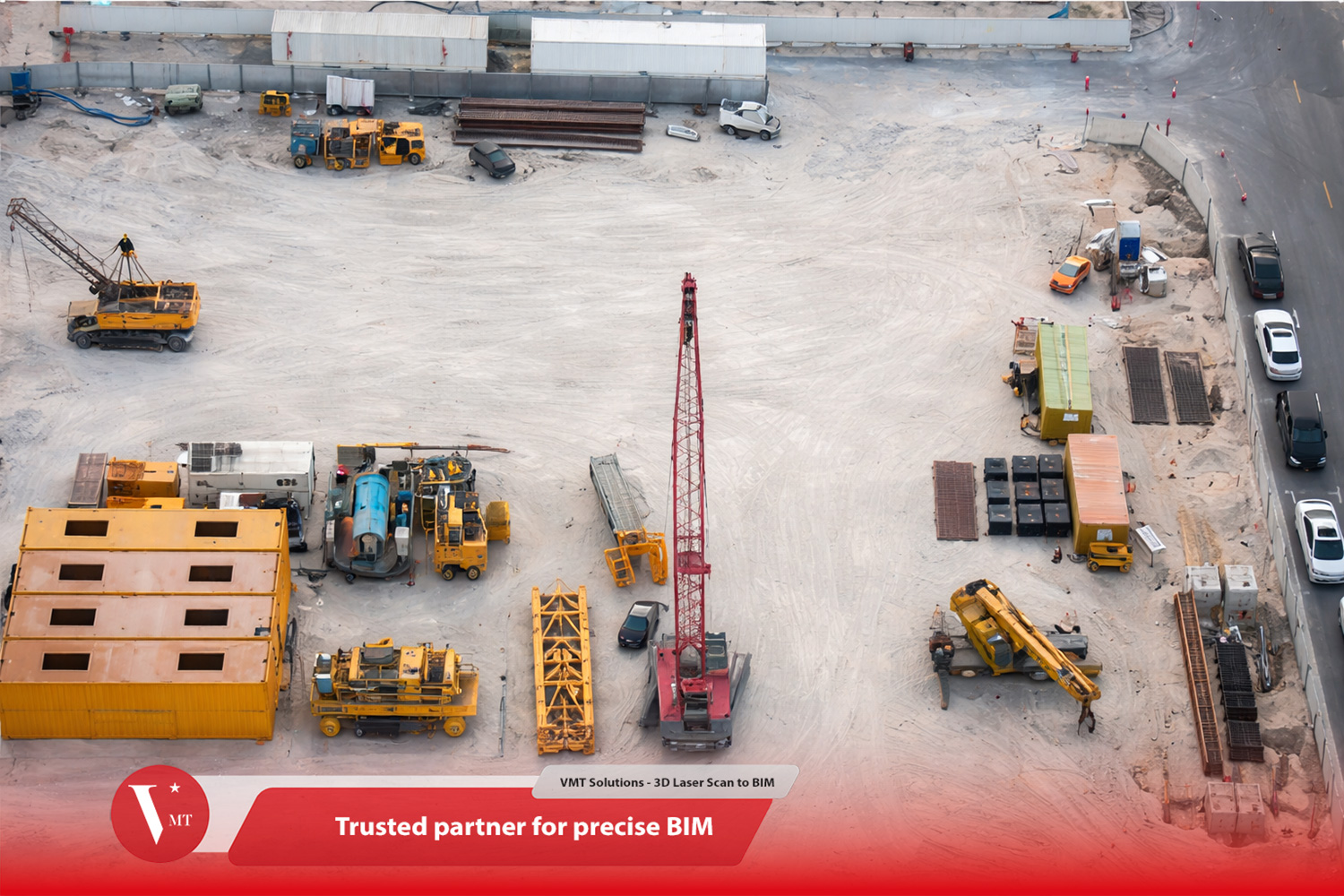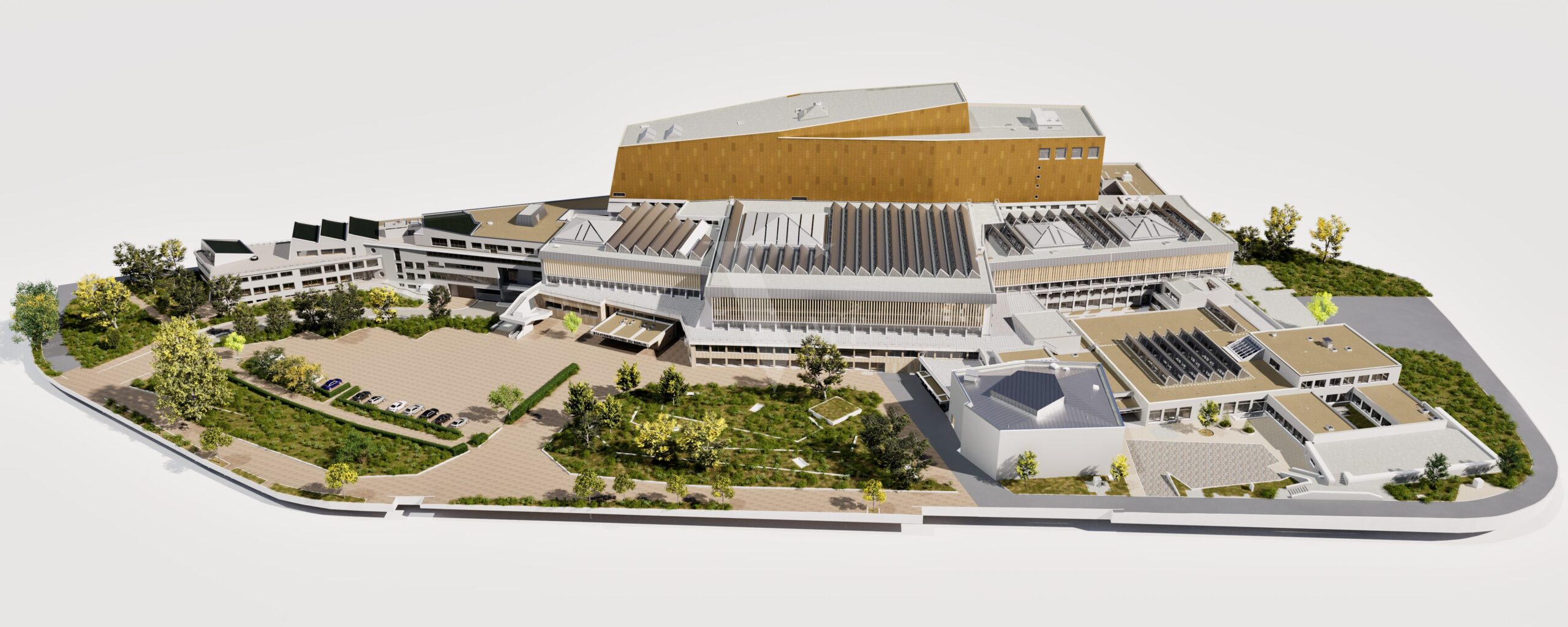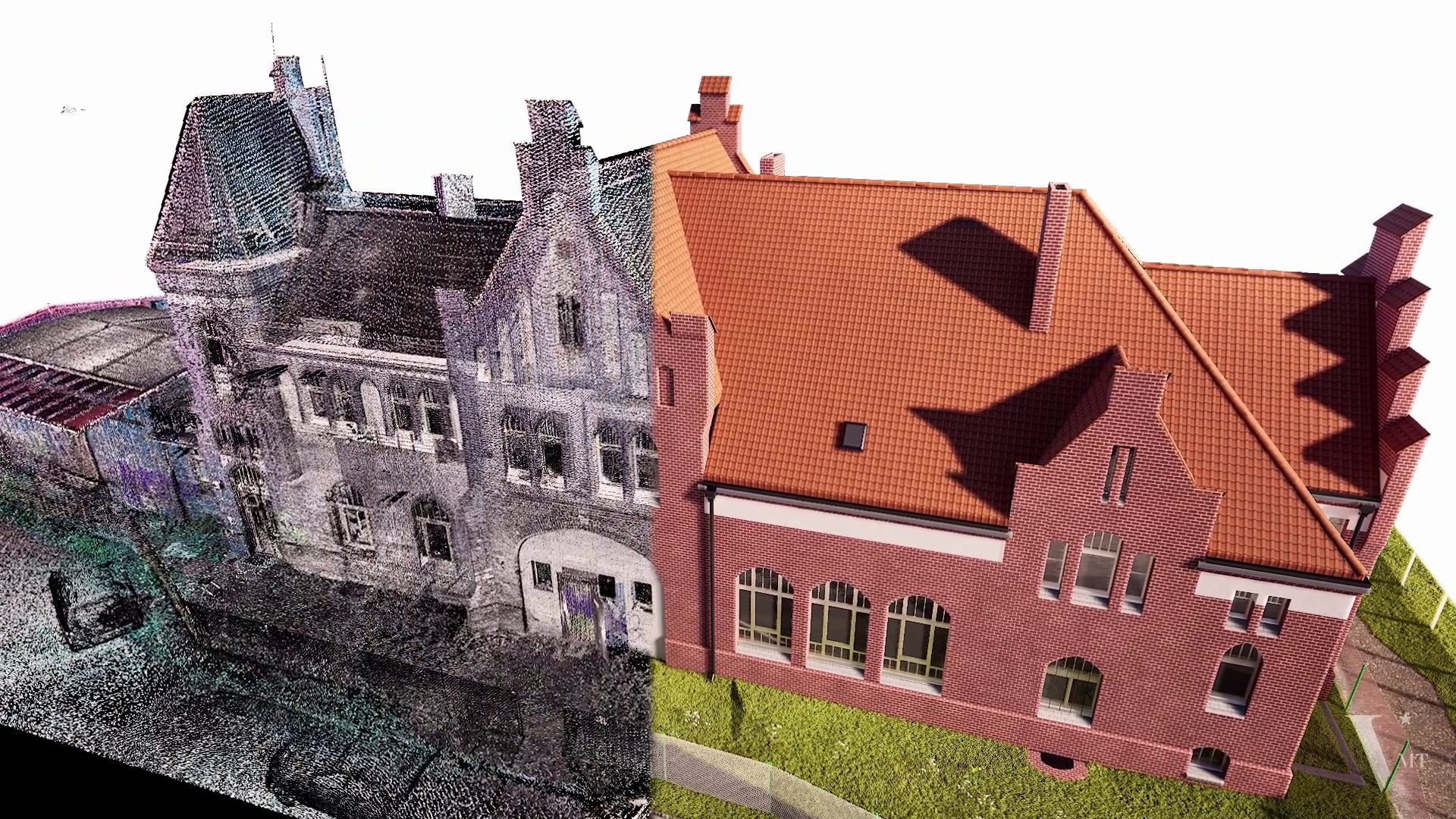In the context of the rapidly growing construction industry, which demands high expertise and optimized manpower, reducing staffing needs through BIM outsourcing has become a wise choice for businesses aiming to enhance competitiveness and reduce operational costs. This article will delve into the benefits of the BIM outsourcing model, the challenges companies face when implementing in-house BIM, and provide guidance on selecting the right partner to maximize project efficiency.
Table of Contents
General Introduction
In the digital age, Building Information Modeling (BIM) technology has become the new standard in the global construction industry. BIM not only enables the accurate collection, management, and communication of data but also enhances efficiency, reduces risks, and optimizes workflows through a fully information-integrated 3D model. The demand for BIM is increasing, especially in large, complex projects with high requirements for quality and timelines.
However, building and maintaining an in-house BIM team is not simple. Many businesses face challenges related to costs, a shortage of highly skilled personnel, and increasing workloads that lead to underwhelming results. This is why many companies are turning to BIM outsourcing as an optimal solution to save resources, improve quality, and shorten project timelines.
This article will provide an in-depth analysis of this model, helping businesses better understand its benefits, how it works, and the criteria for selecting the right partner to reduce staffing burdens and optimize construction project operations.
What is BIM and Why is it Important in Modern Construction?
Definition of BIM and Its Key Advantages
BIM, or Building Information Modeling, is a construction technology process that creates and manages digital data for the entire project lifecycle. Instead of merely drawing two-dimensional (2D) plans, BIM provides dynamic 3D models that integrate all information about materials, structures, technical designs, and construction processes.
The unique aspect of BIM is its ability to comprehensively simulate a project from the conceptual design phase to construction and later operation. This allows stakeholders to accurately predict potential issues, optimize designs, and minimize risks related to technical errors or unexpected costs.
The greatest benefit of BIM lies in its ability to facilitate seamless collaboration among all parties, from architects, engineers, and contractors to project managers. This makes the entire workflow more efficient, reducing time and costs while improving construction quality.
The Importance of BIM in Modern Construction
In an increasingly competitive environment, construction companies must adapt to new trends to survive and grow. BIM has become a decisive factor enabling companies to:
- Manage project data accurately, consistently, and with easy access.
- Minimize design errors that could lead to costly repairs later on.
- Improve construction efficiency, reduce approval times, and avoid delays.
- Promote collaboration and continuous information sharing among departments and partners.
- Easily optimize operation, maintenance, and asset management after project completion.
By combining these benefits, BIM not only enhances a company’s competitiveness but also contributes to making the construction industry more sustainable and modern in the globalized era.
Challenges Companies Face When Implementing In-house BIM
Although BIM offers numerous advantages, operating this model internally poses significant challenges for construction businesses. In the following section, we will analyze the most common difficulties in detail.
Human Resource Challenges in In-house BIM Implementation
The Pressure of Recruiting and Training an Internal BIM Team
The demand for professionals with skills and experience in BIM is steadily rising, yet this talent is not easily found in the labor market. Engineers and architects capable of working with BIM software such as Revit, Navisworks, ArchiCAD, etc., are scarce and highly sought after.

Furthermore, training internal teams to keep up with new technology is no easy task. It requires significant time, high costs, and investments in software, hardware, and specialized training programs. In fact, many businesses, due to a lack of knowledge or resources, have had to abandon their goal of implementing BIM internally or settle for substandard quality.
Difficulties in Maintaining and Updating Employee Skills
The BIM industry is constantly evolving at a rapid pace, with new software and continuously changing international standards. In-house teams must always update their knowledge to avoid falling behind, which requires regular investment in training and skills enhancement. Not every business has the ability to maintain and develop their teams over the long term to meet the highest industry standards.
These challenges lead to a shortage of high-quality personnel, causing project delays, reducing the company’s reputation, and increasing operational and training costs.
Flexibility and adaptability of the in-house BIM team
In large-scale projects, requirements for LOD (Level of Detail), as well as the formats and software used, may vary, creating difficulties in adjusting or expanding the in-house team according to each project’s needs. Businesses are not always able to adapt quickly, leading to delays or missed collaboration opportunities.
For all these reasons, it is clear that building and operating an in-house BIM team is not only costly but also does not guarantee competitiveness and flexibility in the constantly changing construction industry.
Why Businesses Struggle with In-house BIM Implementation
Recruitment and training costs for an in-house BIM team
One of the biggest barriers is the cost of recruiting qualified personnel. Establishing a professional BIM team that meets modern project requirements is very expensive. In addition to high salaries and benefits, businesses must also invest in training programs, skill enhancement, constant software updates, and other expenses such as hardware, licensed software, and technical department operations.
These costs not only impact finances but also increase the risk of staff turnover over time, especially in a highly competitive labor market. Therefore, many businesses must carefully calculate to ensure projects are not affected by staff shortages or substandard quality.
Shortage of high-quality personnel in the market
The BIM talent pool is limited, and not everyone has the skills to work effectively in real-world project environments. The labor market still mainly focuses on traditional engineering fields, while the number of engineers proficient in advanced BIM, familiar with international standards such as LOD, ISO, and new software, remains scarce.
This leads to intense competition, forcing companies to offer high salaries while still struggling to hire the right people at the right time. Furthermore, lengthy internal training processes cannot always meet project deadlines, leaving companies vulnerable to resource shortages.
Deadline pressure and poor flexibility of in-house teams
In commercial construction environments with accelerated timelines, companies constantly face tight deadlines. In-house BIM teams often lack the flexibility to scale up or down according to specific project needs, resulting in overload or wasted resources.
As a result, many projects are delayed, causing financial losses and reputational damage. In-house teams are not agile enough to quickly adapt to the specific requirements of each stage or different projects, especially for small and medium-sized companies without the capacity to expand their teams continuously.
Summary of challenges and reasons to seek optimal solutions
From the above analysis, it is clear that reducing workforce load through BIM outsourcing is not only a financially sound solution but also the key to enhancing competitiveness, improving project efficiency, and minimizing risks related to quality and timelines. In the next section, we will explore the BIM outsourcing model and its outstanding benefits in more detail.
BIM Outsourcing – The Optimal Workforce Solution
What is the BIM outsourcing model?
The BIM outsourcing model refers to the practice where companies contract professional BIM service providers to handle tasks related to 3D modeling, technical data, or project management.
Instead of building an in-house team, businesses can hire experienced specialists, thereby reducing the burden of staffing, initial investment costs, and focusing resources on core business activities. This model is ideal for companies aiming to scale up projects, optimize budgets, or find flexible solutions to match project schedules.
Common outsourcing types: per project, per hour, or service package
Depending on project needs and scale, BIM service providers typically offer several outsourcing options:
- Per project: suitable for large, complex projects where companies contract to complete the entire BIM model or specific parts of the project.
- Per hour: ideal for tasks requiring flexible timeframes, suitable for temporary needs or boosting the productivity of in-house teams.
- Service package: bundled services including modeling, quality checks, and MEP coordination, helping businesses optimize both costs and timelines.
Key benefits of BIM outsourcing
BIM outsourcing services offer numerous advantages to businesses, including the following main benefits:
- Cost savings: Minimizes expenses for recruitment, training, software, hardware, and maintaining an in-house team. Businesses only pay for the services they need.
- Faster turnaround: Professional teams with international-standard workflows can deliver models faster, ensuring project deadlines are met.
- Access to experienced experts: Service providers often have highly experienced technical teams who have worked on major projects, ensuring quality models and minimizing technical risks.
- Scalability and workflow flexibility: Companies can easily adjust the scale and service requirements for each project stage without worrying about expanding in-house teams.
Factors to consider when choosing a BIM outsourcing partner
Selecting the right partner is crucial to the success of the BIM outsourcing model. Key factors to consider include:
- Experience and a successful portfolio of similar projects.
- Flexibility in software use, data export standards, LOD (Level of Detail), and output formats.
- Adherence to information security standards and intellectual property rights.
- Positive feedback from previous clients and a solid reputation in the industry.
Ultimately, these insights will help businesses make informed decisions when choosing a BIM outsourcing partner to reduce workforce burdens, optimize resources, and improve project quality.
Comparison Between In-house BIM and Outsourcing
Comparison table of the two approaches
| Criteria | In-house BIM | Outsourced BIM |
|---|---|---|
| Cost | High initial investment + high ongoing maintenance costs | Reasonable cost allocation, flexible by project |
| Execution speed | Depends on the capabilities of the internal team | Fast thanks to a professional, experienced team |
| Quality | Depends on internal manpower and training | Strictly controlled by reputable providers |
| Scalability | Limited by human resources and budget | Easily scalable up or down according to needs |
| Flexibility in management | Low (depends on the internal team) | High (services customized to project requirements) |
| Security risks | High if internal data is not well managed | Professional providers ensure maximum security |
When to Keep an Internal BIM Team vs. When to Outsource
- Keep an internal BIM team:
- When the company is large and requires BIM on a continuous, stable basis.
- For long-term strategic projects that require tight control over data.
- When aiming to develop in-house capabilities, train, and build a long-term internal team.
- Outsource BIM:
- For small or medium-sized companies, or those just starting BIM implementation.
- For projects with urgent timelines.
- When avoiding fixed HR costs, instead leveraging professional, flexible services.
- To optimize costs and focus on the company’s core activities.
Choosing the right approach allows companies to assess factors that align with their goals and capabilities, optimizing project outcomes while ensuring flexibility and competitiveness.
Criteria for Choosing a Reliable BIM Provider
Experience and successful portfolio
An important criterion when selecting a BIM service provider is the ability to demonstrate expertise through completed projects. Reputable providers typically showcase a portfolio of notable projects, reflecting their capacity to handle different types of work — from residential and commercial to industrial and infrastructure projects.

They should have certifications, awards, or positive client feedback to strengthen credibility. This portfolio allows companies to evaluate suitability, as well as predict the quality and delivery timelines of the partner.
Flexibility to meet technical requirements
BIM modeling is not just about software; the provider must adapt quickly to international standards such as LOD, various software platforms, and output formats suitable for each project. The ability to customize according to client requirements helps minimize revisions and ensures timely delivery.
Ensuring data security and model quality
Construction project data is a valuable asset, prone to leakage or misuse without strict security systems. Businesses should clarify policies on data protection, intellectual property rights, access control, as well as quality control standards to ensure models are accurate, complete, and compliant.
Selecting a partner based on suitability
Choosing a BIM service provider should be based on a combination of factors such as practical experience, customization capabilities, security policies, pricing, and client feedback. A clear, well-structured proposal with good support policies will help ensure a successful collaboration.
Case Study: Successful Workforce Optimization through BIM Outsourcing
Brief project description
A high-end residential complex project in the city center, with a total area exceeding 50,000 m². The investor required fast progress, high quality, and maximum cost savings during construction.
Initial staffing challenges
Initially, the construction company faced a shortage of qualified BIM staff, unable to keep up with the planned schedule. Subcontractors or internal teams could not meet the LOD requirements, causing delays and significantly affecting overall project progress.
Results after outsourcing
After contracting a reputable BIM service provider, the company achieved the following results:
- Modeling time reduced by 40% compared to the original plan.
- Model quality met international standards, suitable for design and technical teams.
- Minimized design discrepancies, reducing costly construction revisions.
- Internal staff focused on management and supervision, improving project efficiency.
- Saved over 25% in costs compared to recruiting and training an internal BIM team, while reducing quality risks.
Transformation journey and lessons learned
This project clearly demonstrates the effectiveness of the BIM outsourcing model in reducing workforce load, optimizing resources, and enhancing quality. The key is to choose the right partner, establish clear collaboration processes, and maintain close communication throughout implementation.
Conclusion
In today’s digital era, reducing workforce load through BIM outsourcing is a smart strategy for construction companies to overcome staffing challenges, save costs, and boost competitiveness. Choosing a reputable, suitable partner and leveraging the full benefits of this model helps companies not only deliver projects on time but also achieve sustainable growth in a highly competitive environment. This trend not only fosters innovation in the construction industry but also opens new opportunities for companies aiming to expand globally.
VMT Solutions is a professional BIM service provider in Vietnam and internationally, with experienced engineers, flexible modeling levels from LOD 100 to LOD 400, supporting multiple software (Revit, ArchiCAD, AutoCAD, IFC…). With optimized processes and strict quality management systems, VMT Solutions is committed to helping clients save manpower, shorten implementation time, and enhance project efficiency.
Contact VMT Solutions now for a free consultation and start transforming your BIM process today!
About the Author:
Nguyen Huynh (Rainer)

As the Co-Founder and Chief Executive Officer of VMT Solutions, SSIFT Vietnam, BlackSwiss Vietnam, and Victoria Measuring Solutions PTY LTD (Australia), I completed my Master’s program in Technical and Vocational Education and Training (TVET) in Germany in 2007. With over a decade of experience in point cloud processing and BIM services, I am passionate about tackling complex challenges and developing innovative workflows to enhance accuracy and detail in point cloud-to-BIM conversion.
At VMT Solutions, we are committed to delivering high-quality services that provide exceptional value, especially for surveying companies. We focus on building mutually beneficial partnerships, ensuring that our clients receive customized solutions tailored to their specific needs. Every day, I strive to push the boundaries of the industry, continuously improving our methods and exploring new ways to optimize the services we provide.
Recent Posts
Tag Cloud
We are proud to have
satisfied customers.
„Your plans are perfect; I’ve never seen anything like this before. These are drawings of the highest quality, I must say. I want to express my sincere thanks once again for your work.“
VMT modeled a large industrial building in 3D for our research project. We provided DWG plans to VMT, and they delivered a highly detailed model, including the building envelope, interior walls, openings, and stairs. We had previously contracted a German company for the same object, but unfortunately, it didn’t work out. I was relieved and pleased that VMT handled it so reliably. Thank you for the excellent work and the truly fair price!
Very reliable company, courteous staff, and top-quality work. Our plans were created quickly and accurately. Thank you for that. Highly recommended.
Excellent advice and high 3D modeling quality at a great price-performance ratio… What more could you want? I can highly recommend them…


